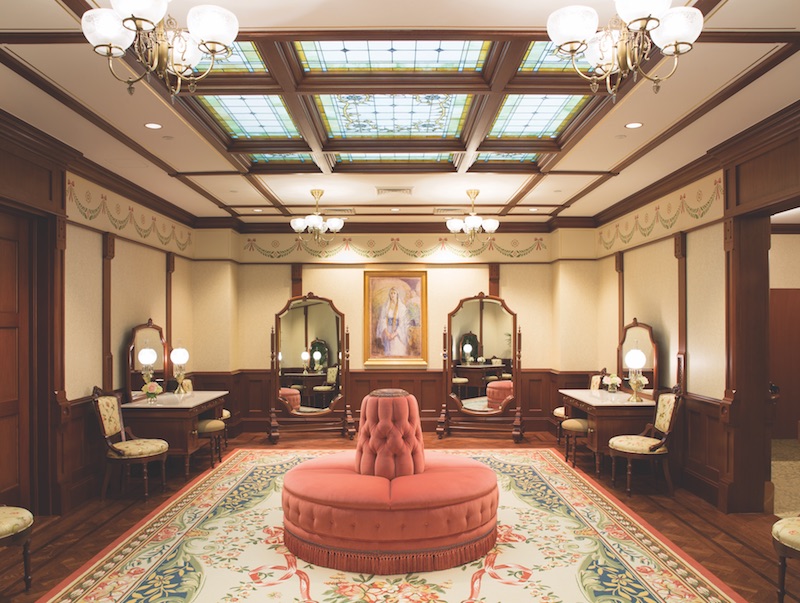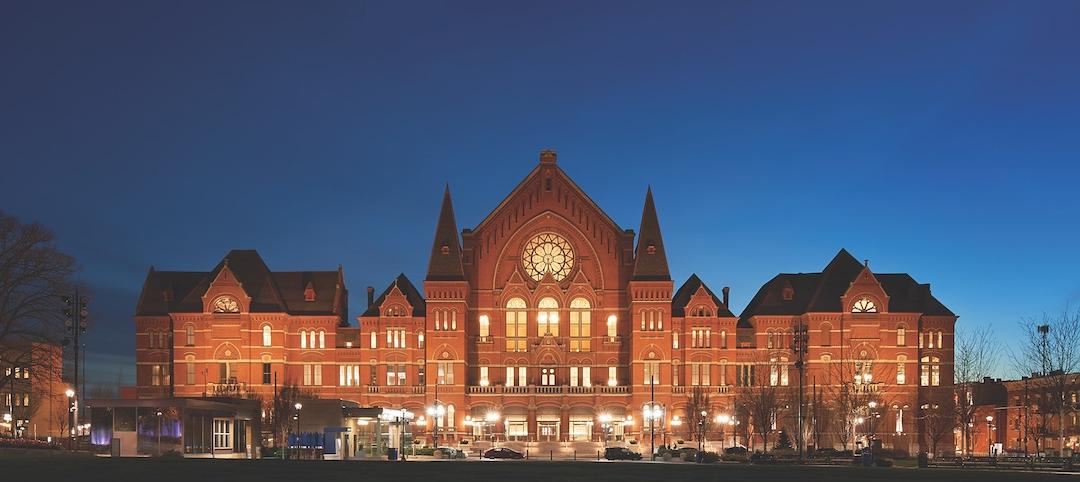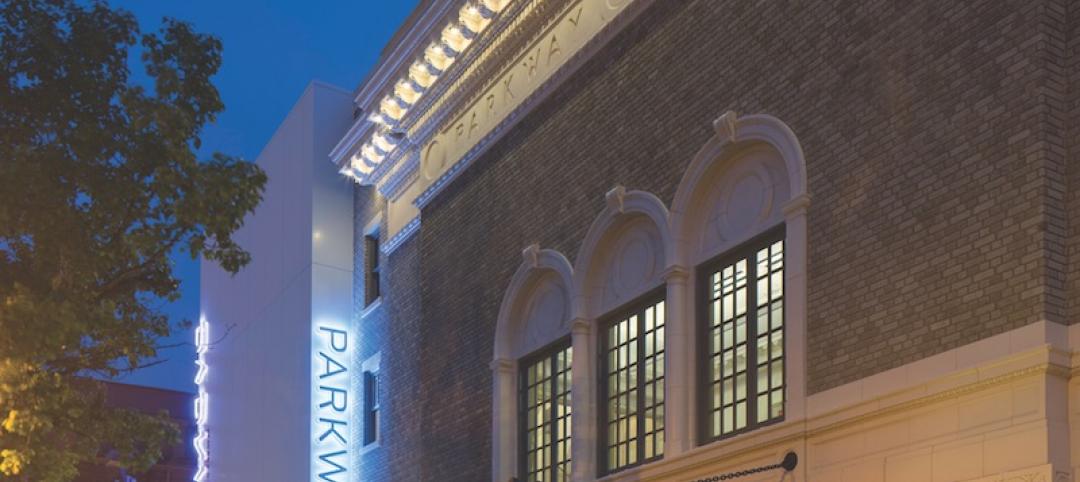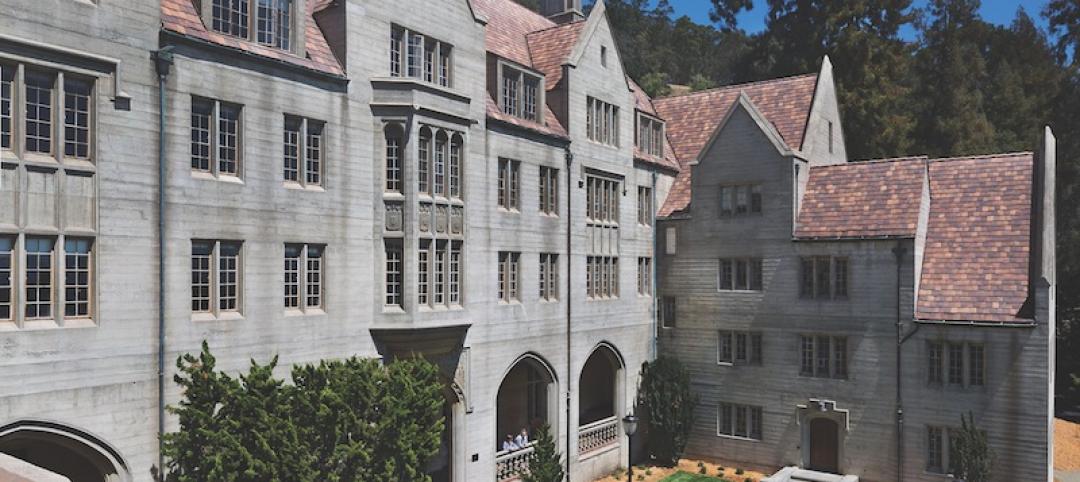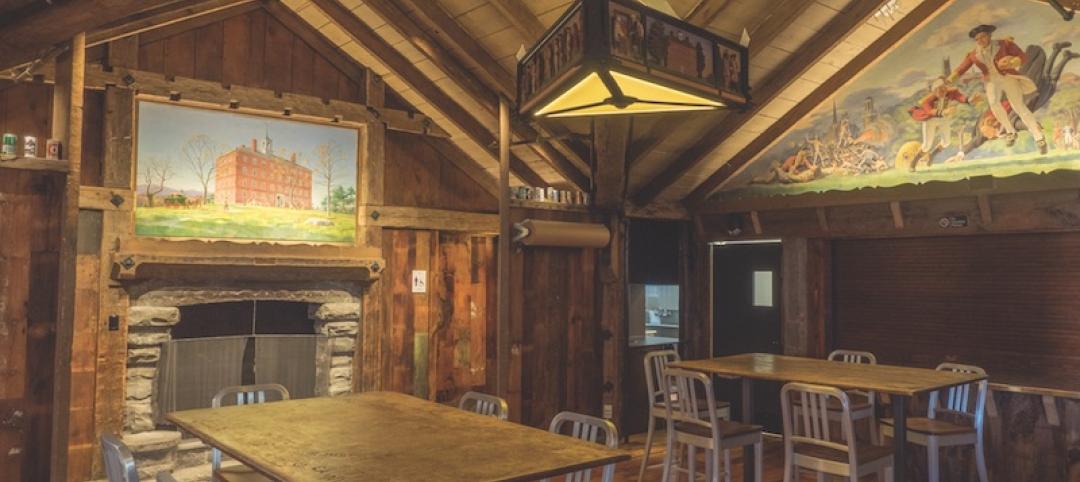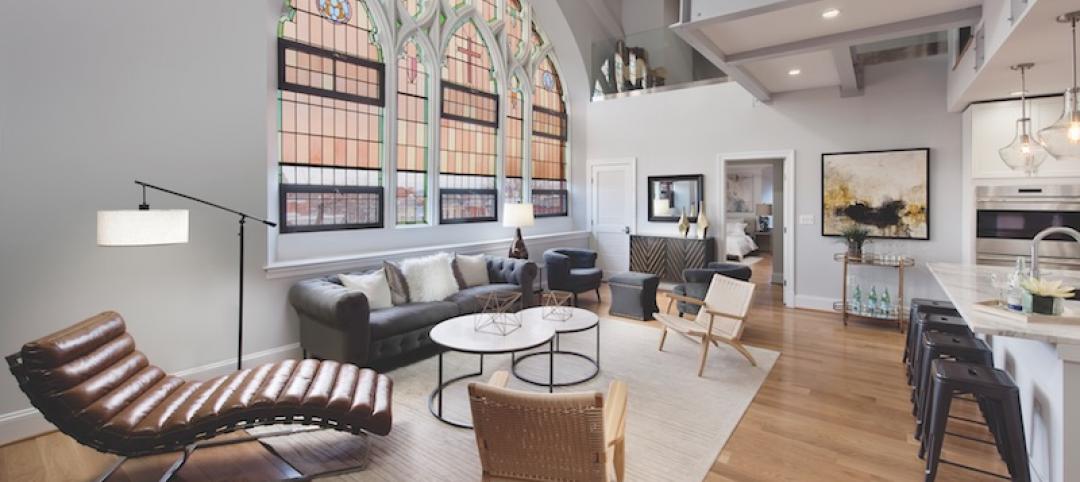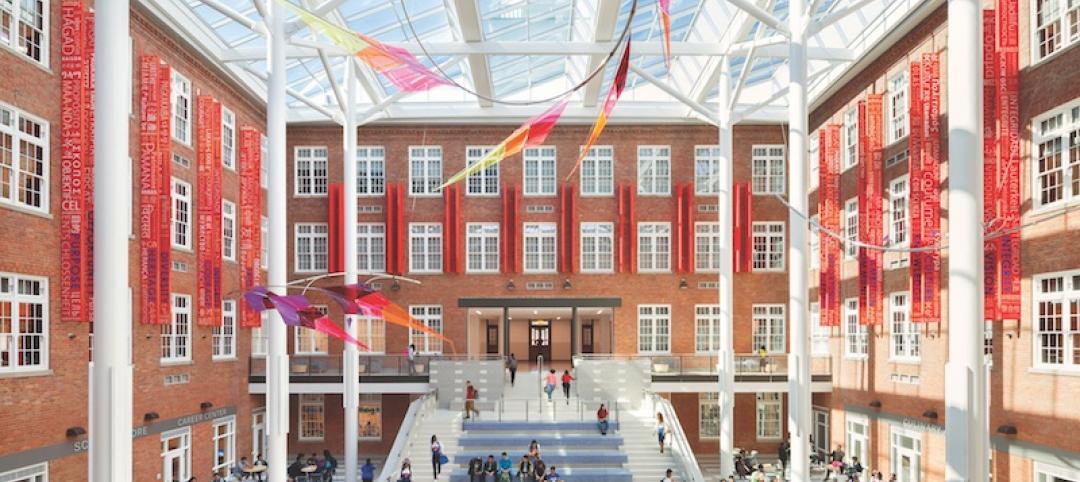December 17, 2010. That was the day a 300-watt light fixture carelessly placed on a wooden speaker box caused a fire that burned down the 35,000-sf Utah Stake Tabernacle in Provo, which the LDS Church had dedicated in 1898.
Parts of the tabernacle’s exterior shell were the only things that survived the blaze. A few months later, Thomas Monson, the LDS Church’s President, announced at the Mormon Church’s annual General Conference that the tabernacle walls would be preserved and the building rebuilt as a temple. This was completed in late 2015 and dedicated on March 20, 2016, the 115th anniversary of the death of William H. Folsom, the tabernacle’s original designer.
Unlike a tabernacle, which along with weekly church services can be used to host civic events like lectures and concerts, temples are holy places that are closed to all but devout members of the Church. Temples typically house small rooms used primarily for the faith’s essential rituals, such as baptisms and marriages.
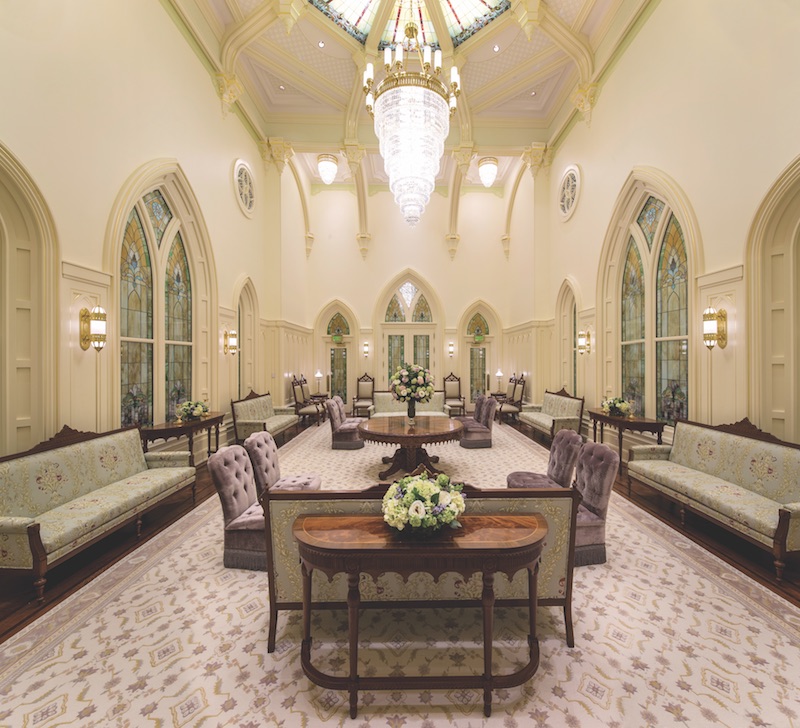 In the LDS faith the Celestial Room signifies the union between God and the family. It is viewed as the most glorious room in the temple. The art glass, furnishings, carpets, and light fixtures pay homage to the time when the original tabernacle was built.
In the LDS faith the Celestial Room signifies the union between God and the family. It is viewed as the most glorious room in the temple. The art glass, furnishings, carpets, and light fixtures pay homage to the time when the original tabernacle was built.
The reconstruction of Provo City Center Temple, as the building is now called, broke ground on May 12, 2012. The project expanded Provo Tabernacle’s size to 93,000 sf, primarily by creating two below-grade floors that include underground parking. The excavation went 40 feet down and required extensive shoring and water removal. The Building Team stabilized the 6.8-million-pound exterior walls in order to place the structure onto a network of 146 steel pipes, nine inches in diameter and 90 feet long.
Smaller micropiles also held up the main structure. This was the first time in Utah, and only the third time in the world, that construction crews used steel shoring and needle beams to support a complete building.
During reconstruction, what remained of the tabernacle was fortified with up to 10 inches of reinforced concrete. The project team removed two interior wythes of historic brick and secured three others with steel helical ties. Shotcrete was applied to two layers of rebar that were erected around the interior perimeter. The shotcrete walls function as reinforced shear walls to resist lateral earthquake and wind loads.
Because interior space was at a premium, the Building Team needed to apply the shotcrete as thin as possible.

More than 20,000 bricks, including original brick from the 1880s building that the crew salvaged and restored, were used. Crews also drew from other local stockpiles of brick that either came from the same era, or looked close enough to produce a consistent exterior.
Although the reconstruction expanded the building footprint, it also maintained aspects of the tabernacle’s floor plan. For example, vertical circulation still occurs at the corner stair towers.
Considerable attention was paid to historical accuracy. Perhaps the temple’s most glorious space is its Celestial Room, whose art glass, furnishings, carpets, and light fixtures combine to pay homage to the period when the original tabernacle was constructed.
The interior lower and main levels favor design details from the 19th-century Eastlake architectural movement, whereas and the upper levels feature Higher Gothic Revival design.
The above-ground levels include a chapel, instruction rooms, offices, lobbies, and five rooms where marriages are performed.
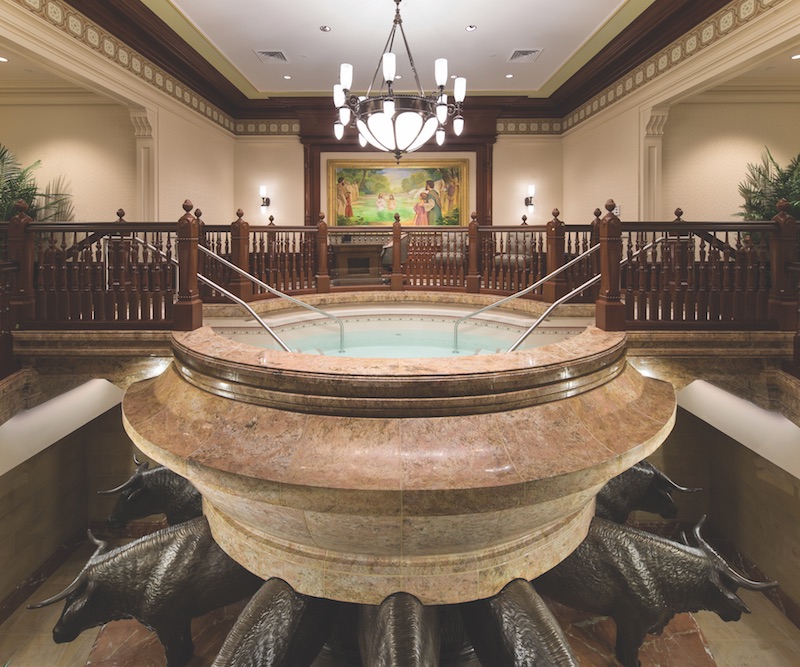 The baptismal font rests on the backs of 12 oxen. The symbol of the oxen holds special meaning in the LDS Church.
The baptismal font rests on the backs of 12 oxen. The symbol of the oxen holds special meaning in the LDS Church.
The temple’s custom-made walnut and mahogany millwork and trim were based on the tabernacle’s original faux-painted wood trim. The temple’s art glass windows follow the design and colors of the tabernacle’s windows, which were installed around 1917. Paint colors reflect common colors used in the tabernacle as well as popular colors from 1880s Utah.
The reconstruction restored the roofs of the tabernacle’s four corner towers, which had collapsed during the fire, and rebuilt a historic center tower, which had been removed in 1915. Natural light streaming through windows around the tower illuminate an art glass ceiling in the temple’s upper main lobby.
Upon completion of the temple, Provo became the LDS Church’s second city with two temples. (South Jordan, Utah, is the other.) The Provo City Center Temple has alleviated some of the overcrowding at the Provo Utah Temple, one of LDS Church’s busiest. The reconstruction of Provo City Center Temple has also been a boon to nearby restaurants and businesses that are benefiting from the foot traffic the temple has generated.
Among the temple’s many accolades: the 2017 Utah Heritage Award and the 2016 IIDA BEST Award.
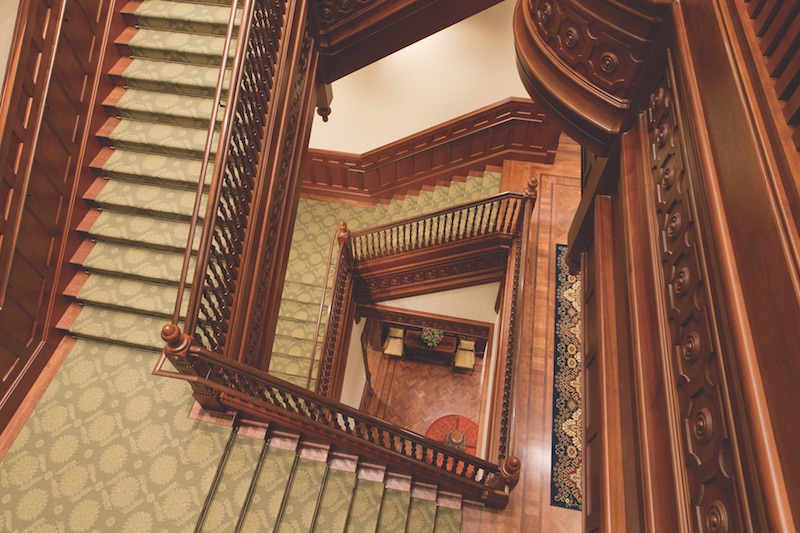 The use of carved wood, primarily custom-made walnut and mahogany millwork and trim, is prevalent throughout the temple.
The use of carved wood, primarily custom-made walnut and mahogany millwork and trim, is prevalent throughout the temple.
Project Summary
Platinum Award Winner
Building Team: FFKR Architects (submitting firm, architect) The Church of Jesus Christ of Latter-day Saints (owner) Reaveley Engineers + Associates (S/PE), Van Boerum & Frank Associates (ME) Envision Engineering (EE) Jacobsen Construction (GC/CM).
Details: 93,000 sf. Construction cost: Confidential. Construction time: March 2012 to November 2015. Delivery method: CM/GC.
See all of the 2017 Reconstruction Award winners here
Related Stories
Reconstruction Awards | Nov 12, 2018
Cincinnati Music Hall: Saving a cultural anchor
Cincinnati uses ‘skillful triage’ to bring its endangered Music Hall up to date.
Reconstruction Awards | Dec 1, 2017
Rescue mission: Historic movie palace is now the centerpiece of Baltimore’s burgeoning arts hub
In restoring the theater, the design team employed what it calls a “rescued ruin” preservation approach.
Reconstruction Awards | Dec 1, 2017
Gothic revival: The nation’s first residential college is meticulously restored
This project involved the renovation and restoration of the 57,000-sf hall, and the construction of a 4,200-sf addition.
Reconstruction Awards | Dec 1, 2017
Rockefeller remake: Iconic New York tower is modernized for its next life
To make way for new ground-floor retail and a more dramatic entrance and lobby, the team removed four columns at the ground floor.
Reconstruction Awards | Nov 30, 2017
BD+C's 2017 Reconstruction Award Winners
Provo City Center Temple, the Union Trust Building, and the General Motors Factory One are just a few of the projects recognized as 2017 Reconstruction Award winners.
Reconstruction Awards | Nov 29, 2017
College credit: Historic rehab saves 50% on energy costs
The project team conducted surveys of students, faculty, and staff to get their input.
Reconstruction Awards | Nov 29, 2017
Amazing grace: Renovation turns a church into elegant condos
The windows became The Sanctuary’s chief sales edge.
Reconstruction Awards | Nov 28, 2017
Broadway melody: Glass walls set just the right tone for a historic lobby in Lower Manhattan
The adaptation of the 45,000-sf neoclassical lobby at 195 Broadway created three retail spaces and a public walkway.
Reconstruction Awards | Nov 27, 2017
Higher education: The rebirth of a Washington, D.C., high school
The project team, led by architect Perkins Eastman, restored the original cupola.
Reconstruction Awards | Nov 27, 2017
Bank statement: A project team saves a historic bank, yielding 100% leaseup for the developer
The project team had to fix poor renovations made in the ’50s.


